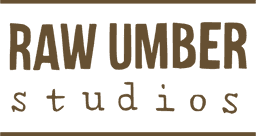Materials list - The Live Figure with Nicholas O'Leary
If you’re a beginner, then knowing what materials to buy can be daunting. If you have no supplies at all, or aren’t sure what to bring, then we recommend you buy the following. We’ve included links to Jackson’s Art, but most of these supplies are available from other outlets too.
Getting started in oil paints can be expensive, but much of this equipment should last you for years. If you are an intermediate painter, then treat the following list as a guideline – feel free to bring along different brands or additional materials.
The following materials are recommended by Nicholas.
If you have any questions, please pop us an email on [email protected]
Painting surface:
- 2 smaller canvases, boards or panels (approximately between 15 x 22cm and 30 x 40cm)
- 1 larger canvas, board or panel (preferably 30 x 40cm or larger) It is best to gesso and sand the canvases prior.
Paint brushes:
Up to the individual, but flat brushes are what I often use, as you can get some details while still using a larger brush. Here are some recommendations:
Up to the individual, but flat brushes are what I often use, as you can get some details while still using a larger brush. Here are some recommendations:
- 2 x Size 2, Size 4 and Size 6 Filbert Hog Brush
- 1 x Size 2, Size 4 and Size 6 Long Flat Hog Brush
- 2 x Size 0 Synthetic Filberts
- If you need a starter brush set, there's this one from Rosemary & Co
Paint:
Oil colours are recommended, but acrylic or gesso are optional if you'd prefer.
Oil colours are recommended, but acrylic or gesso are optional if you'd prefer.
- Titanium white,
- Brilliant yellow,
- Yellow Ochre,
- Madder Deep/Alizarin Crimson,
- Cadmium Red,
- Cadmium Orange,
- Ultramarine Blue,
- Cerulean Blue/Cobalt Blue
(You don't have to use these colours, but these are the ones I will do a demo with. You are free to bring others or extra colours!)
Mediums/other:
- Liquin or other Alkyd
- Linseed Oil
- Low-odour solvent (eg Sansodor). Note that turpentine is not permitted in the studio.
- Some kitchen towels to wipe your paint brushes with.
- 2 x Dipper
- 2 x jam jars for keeping brushes in
- 1 x small plastic container with lid, to store paints in overnight
- Pen and paper to take notes
- Kitchen roll
Notes
+ These paints contain heavy metals and are potentially toxic if inhaled or ingested. In practice, good studio habits (such as not licking brush tips, and taking precautions when sanding used canvases) reduce the risks. If, however, you have a particular reason to be concerned (for example, if you may be pregnant) then e-mail us and we can recommend alternatives.
Make sure you buy the correct handed palette – a palette to hold in your left hand if you’re right-handed, and vice versa. If your budget permits it, we recommend you buy a New Wave palette – these are lightweight, balanced and come pre-varnished. If you buy an unvarnished palette then you’ll need to rub linseed oil on daily for a few days before you can use it.
We recommend Rosemary & Co hog brushes, although there are obviously many other types. For beginners, filberts and flats are most useful. Over time, you’ll get a feel for which brushes you tend to use and which you don’t.
